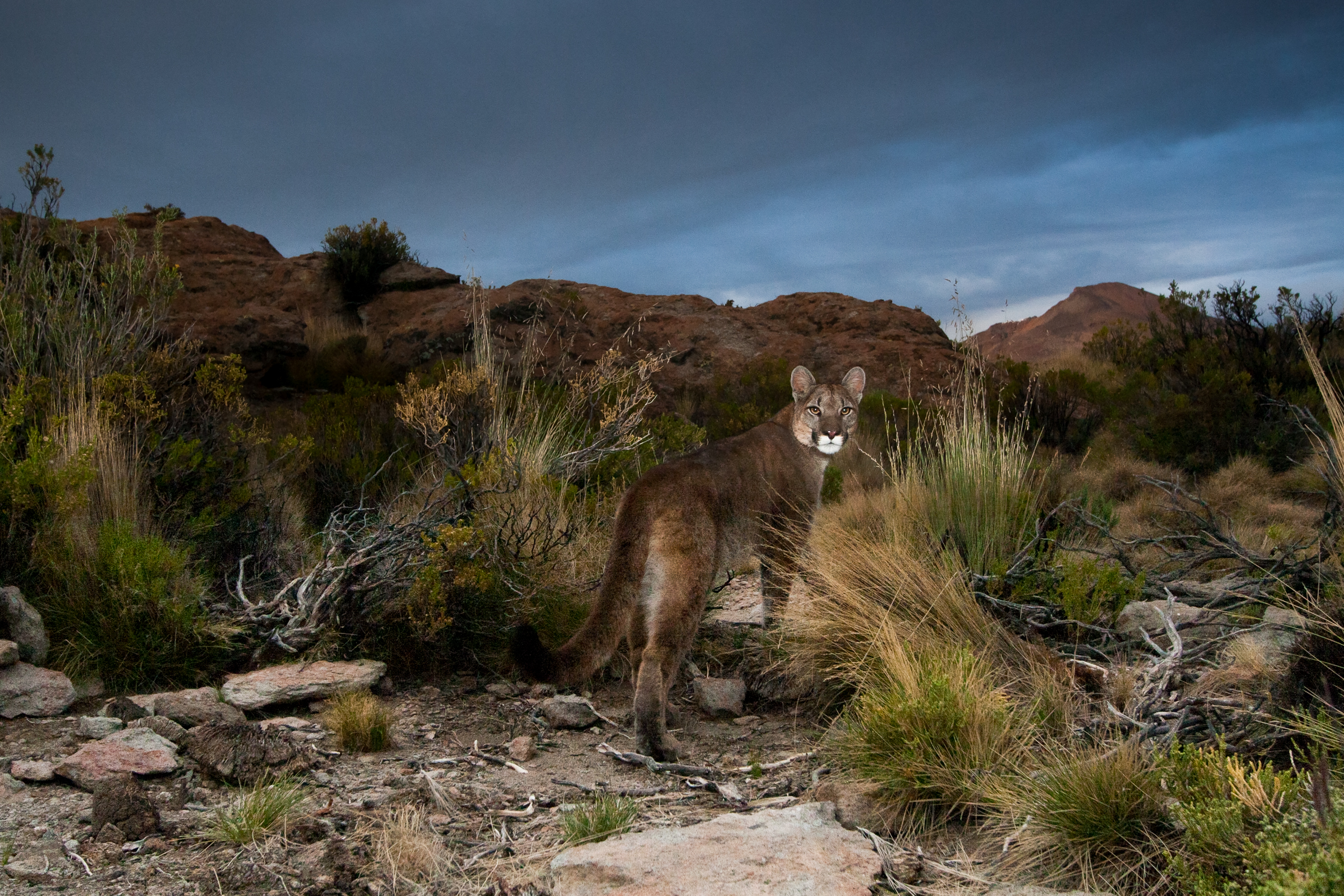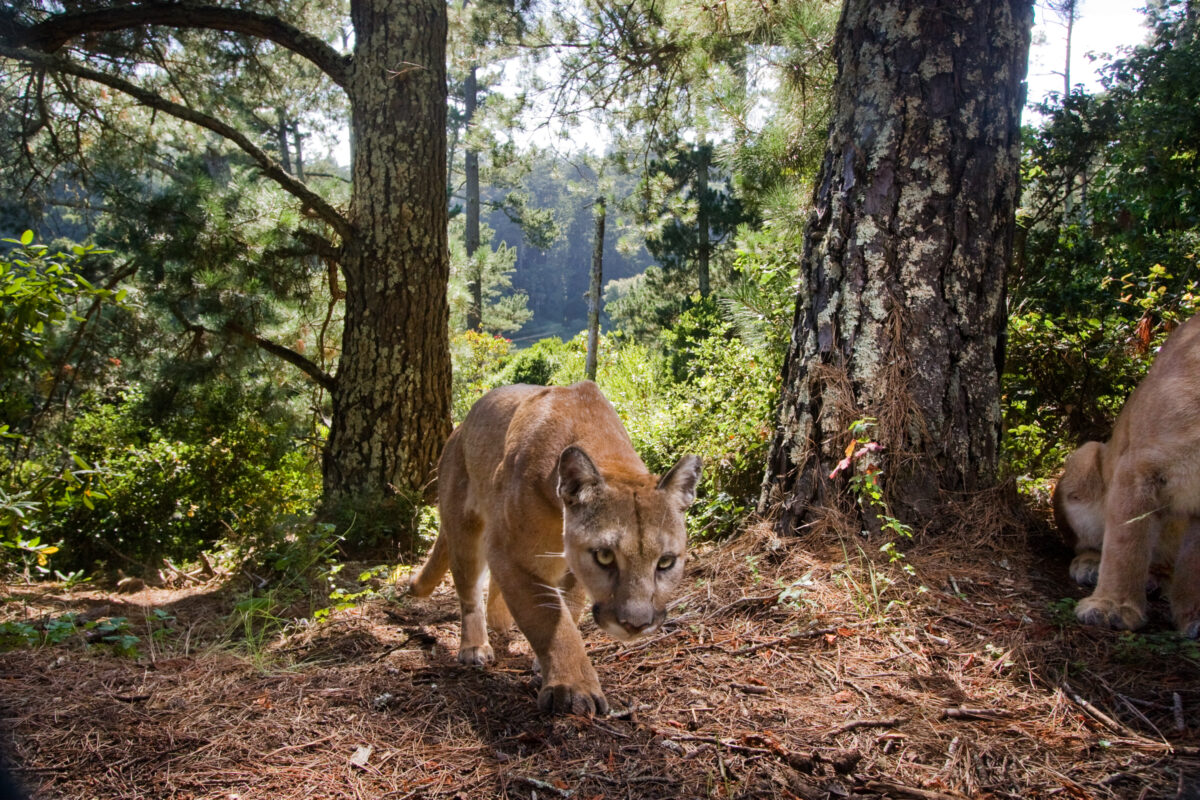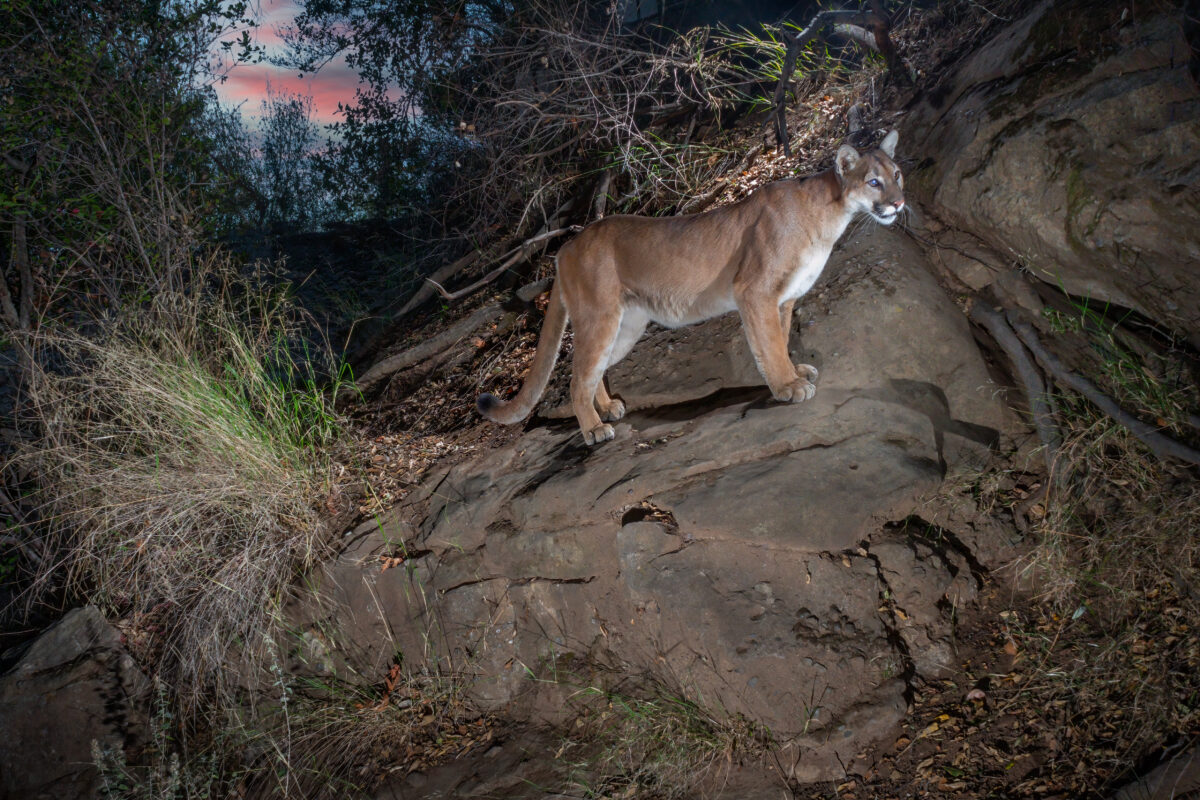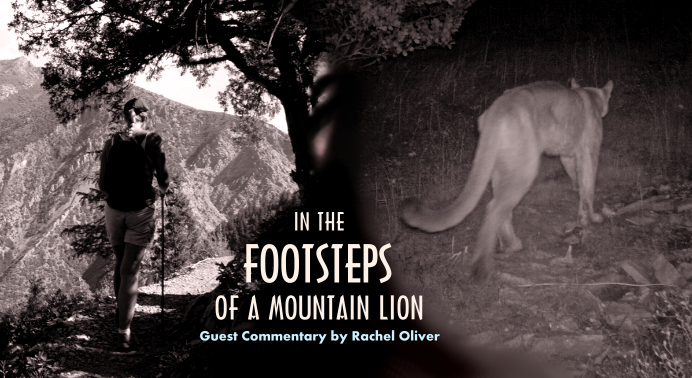
In the Footsteps of a Mountain Lion
Guest Commentary by Rachel Oliver, lion advocate
For decades I had hoped to catch sight of a mountain lion somewhere along a trail in the mountains of Yosemite. I hiked and camped often with my husband, sister, brother-in-law, and all of our seven children, always hoping to see the magnificent tan-colored cat, the largest of the ones that purr.
I have read that most people who live where mountain lions roam never catch sight of one of them in their lifetimes. The cougar is so rarely seen that it inspires mystical reverence in some people and gripping fear of the unknown in others. The mountain lion is almost like the unicorn with archetypal status. Seeing the wondrous American lion was always in my heart and the back of my mind.
More often we are likely to see signs of a mountain lion presence in a wilderness area, if we know what those signs are and are on the lookout for them. When I moved to the Sierra Foothills, in 1986, I hiked one morning with some new Sierra Club friends into woods freshly dusted with snow.
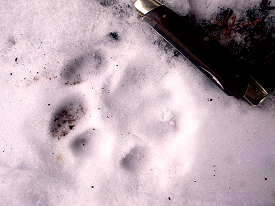
I have read that mountain lions scrape dirt, twigs, leaves and grass into heaps to let other lions know that they are in the vicinity, perhaps as a warning that the other lions are trespassing on territory they consider their own. I have not seen these mounds on the many hikes I have taken through the years. At the same time I smile, knowing that domestic cats scrape dirt over their feces. Just why they do this I am not entirely sure, but I know that they do not like the smell—who does?—and they like to keep themselves clean with a busy tongue. They avoid a dirty litter box. I have seen the mountain lion at the zoo bathing himself in the same fashion as my pet cat, and I assume that the mountain lion covers its droppings, at least some—if not most—of the time.
Mariposa sits just outside Yosemite in a valley along a creek, with walls on both sides. During my working years as staff psychologist at the Mariposa Counseling Center, at daybreak I took a daily walk to the ridge top above my home on Mariposa’s western hillside. On the day after my birthday, in mid-October, I meandered early one morning along the trail on top of the ridge. Dust was thick and deep on the trail because we’d had no rain for the summer months.
I was returning towards home when, upon looking down, I noticed that there were large, perfect footprints in the dust that resembled those I had seen in the snow on the Sierra Club hike. When I glanced up, what I saw ahead of me could not have startled me more. A mountain lion was ahead of me on the trail, walking slowly away from me. It was the most beautiful animal I had ever seen, with tall, bronzed knee socks on all four legs. Apparently I had no fear of what might happen to me. I stood still and embraced the sight as the cat stopped and listened to the birds’ warning calls from the deer brush along the trail. The lion walked ahead around a corner, and I tip-toed along behind; when I had turned the corner I was so close that my shadow brushed the cat’s shoulder. Instantly the cat looked back and—upon seeing me—bounded off the trail, leaving a whirl of dust behind it. The mountain lion had inadvertently given me a late birthday gift I shall never forget.
I had other big cat experiences on the same hill, less than a mile from my front door. I walked up the hill towards the ridge in new-fallen snow late on a Saturday afternoon and saw the lion’s footprints in the fresh snow amidst those of birds, rabbits, and other wildlife. I was fascinated. The footprints headed off the path as I climbed the hill. I continued to the top and walked along the ridge, brushing my hands along the chaparral laden with the beautiful, heavy snow. On the way down I could see that the lion had resumed the trail after I had gone by. How close to me was it? I could feel its presence, and darkness was coming on. The next morning I hurried outside to see the footprints again, and sure enough, the lion had again resumed the trail to climb the hill after I had come down.
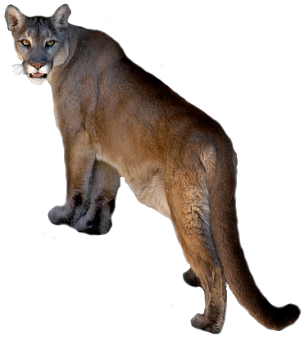
On another occasion I found a dead yearling bear-half-eaten, with insides torn out—definitive signs of a mountain lion kill. Since lions usually cover their kills, this one was fresh and the cougar may have been watching me looking at its kill. I did not touch it. If I had, who knows what might have happened. Again dusk was approaching, and I left the scene quickly. The next morning the bear’s carcass had disappeared, and though I searched for it for at least an hour, I could find no trace of it.
Do mountain lions scratch trees? Bears like to scratch trees and leave wide swaths of scrapes with their wide claws. The mountain lion on my hilltop scratched a big manzanita tree to death with its narrow, sharp claws, leaving a few telltale hairs on its trunk. A neighbor had seen two cougar cubs on the hillside, and there were signs that the mother and cubs had been scratching together, the cubs reaching for smaller branches near the ground. I saw similar mountain lion tree-scratch evidence in other places.
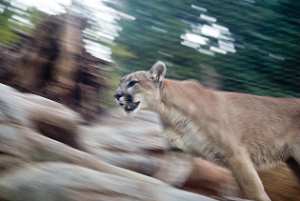
Look for mountain lion signs like the above when walking through wilderness areas, keeping a wary lookout. Had the lion so desired, surely I could have been killed on several occasions, having been within pouncing distance of the mountain lion more than once. Fear was not part of the equation, on my part. Whatever scent I put out was not that of fear. Statistics are not reliable to determine how many human deaths have occurred in mountain lion encounters, but several sources state that approximately twenty people have died because of mountain lion attacks since Europeans first came to this continent four centuries ago. Domestic dogs kill nearly thirty people a year. Our cities are often more dangerous than wildlands.
Acquaintances like to tell me mountain lion stories. Recently I heard that a man met a mountain lion in the woods, face to face. The mountain lion “chuffed,” as if to say “hello,” and went on its way.
I have been a wildlife advocate all of my life, and evidence demonstrates clearly that large predators are necessary for healthy ecosystems. My book, Unscheduled Meetings—life-changing Encounters with Wildlife from Around the Globe, deals with the mounting evidence that when we try to “manage” wildlife numbers, the forests, the planet and its other inhabitants, including ourselves, suffer poor consequences. Mutual respect between the wild ones and ourselves is needed and we must stop our wars against them.


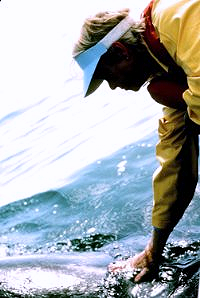

 Facebook
Facebook Twitter
Twitter Send Email
Send Email